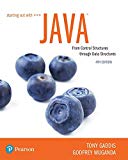
Explanation of Solution
Method definition for “removeMin()”:
The method definition for “removeMin()” is given below:
/* Method definition for "removeMin()" */
String removeMin()
{
/* If the list head is null, then */
if (first == null)
//Returns null
return null;
/* Set minimum string to "first" node */
Node minimumString = first;
/* Set minimum string predecessor to list head*/
Node minimumPred = first;
/* Set reference node to next node of list head */
Node refNode = first.next;
/* Set the reference of predecessor node */
Node refPred = first;
/* If the reference node "refNode" is not "null", then */
while (refNode != null)
{
/* Check condition */
if (refNode.value.compareTo(minimumString.value) < 0)
{
/* Assign minimum string to "refNode" */
minimumString = refNode;
/* Set minimum predecessor to reference of predecessor */
minimumPred = refPred;
}
/* Set "refPred" to "refNode*/
refPred = refNode;
/* Set "refNode" to next reference node */
refNode = refNode.next;
}
// Compute If the first node is the minimum or not
String resultantString = minimumString.value;
/* If the minimum string is list head, then */
if (minimumString == first)
{
//Remove the first string
first = first.next;
/* If the list head is "null", then */
if (first == null)
/* Set "last" to "null" */
last = null;
}
//Otherwise
else
{
//Remove an element with a predecessor
minimumPred.next = minimumString.next;
// If the last item removed, then
if (minimumPred.next == null)
/* Assign "last" to "minimumPred" */
last = minimumPred;
}
/* Finally returns the resultant string elements */
return resultantString;
}
Explanation:
The above method definition is used to remove a minimum element from a list.
- If the list head is null, then returns null.
- Set minimum string and minimum predecessor to “first” node.
- Set reference node to next node of list head and also set the reference of predecessor node.
- Performs “while” loop. This loop will perform up to the “refNode” becomes “null”.
- Check condition using “if” loop.
- If the given condition is true, then assign minimum string to “refNode”.
- Set minimum predecessor to reference of predecessor.
- Set “refPred” to “refNode”.
- Set “refNode” to next reference node.
- Check condition using “if” loop.
- Compute if the first node is minimum or not.
- If the minimum string is list head, then
- Remove the first string.
- If the list head is “null”, then set “last” to “null”.
- Otherwise,
- Remove an element with a predecessor.
- If the last item removed, then assign “last” to “minimumPred”.
- Finally returns the resultant string elements.
Complete code:
The complete executable code for remove a minimum string element from a linked list is given below:
//Define "LinkedList1" class
class LinkedList1
{
/** The code for this part is same as the textbook of "LinkedList1" class */
/* Method definition for "removeMin()" */
String removeMin()
{
/* If the list head is null, then */
if (first == null)
//Returns null
return null;
/* Set minimum string to "first" node */
Node minimumString = first;
/* Set minimum string predecessor to list head*/
Node minimumPred = first;
/* Set reference node to next node of list head */
Node refNode = first...
Want to see the full answer?
Check out a sample textbook solution
Chapter 19 Solutions
Starting Out with Java: From Control Structures through Data Structures (4th Edition) (What's New in Computer Science)
- using r language Obtain a bootstrap t confidence interval estimate for the correlation statistic in Example 8.2 (law data in bootstrap).arrow_forwardusing r language Compute a jackknife estimate of the bias and the standard error of the correlation statistic in Example 8.2.arrow_forwardusing r languagearrow_forward
- using r languagearrow_forwardThe assignment here is to write an app using a database named CIT321 with a collection named students; we will provide a CSV file of the data. You need to use Vue.js to display 2 pages. You should know that this assignment is similar, all too similar in fact, to the cars4sale2 example in the lecture notes for Vue.js 2. You should study that program first. If you figure out cars4sale2, then program 6 will be extremely straightforward. It is not my intent do drop a ton of new material here in the last few days of class. The database contains 51 documents. The first rows of the CSV file look like this: sid last_name 1 Astaire first_name Humphrey CIT major hrs_attempted gpa_points 10 34 2 Bacall Katharine EET 40 128 3 Bergman Bette EET 42 97 4 Bogart Cary CIT 11 33 5 Brando James WEB 59 183 6 Cagney Marlon CIT 13 40 GPA is calculated as gpa_points divided by hrs_attempted. GPA points would have been arrived at by adding 4 points for each credit hour of A, 3 points for each credit hour of…arrow_forwardI need help to solve the following case, thank youarrow_forward
 EBK JAVA PROGRAMMINGComputer ScienceISBN:9781337671385Author:FARRELLPublisher:CENGAGE LEARNING - CONSIGNMENT
EBK JAVA PROGRAMMINGComputer ScienceISBN:9781337671385Author:FARRELLPublisher:CENGAGE LEARNING - CONSIGNMENT C++ Programming: From Problem Analysis to Program...Computer ScienceISBN:9781337102087Author:D. S. MalikPublisher:Cengage Learning
C++ Programming: From Problem Analysis to Program...Computer ScienceISBN:9781337102087Author:D. S. MalikPublisher:Cengage Learning New Perspectives on HTML5, CSS3, and JavaScriptComputer ScienceISBN:9781305503922Author:Patrick M. CareyPublisher:Cengage Learning
New Perspectives on HTML5, CSS3, and JavaScriptComputer ScienceISBN:9781305503922Author:Patrick M. CareyPublisher:Cengage Learning Microsoft Visual C#Computer ScienceISBN:9781337102100Author:Joyce, Farrell.Publisher:Cengage Learning,Programming Logic & Design ComprehensiveComputer ScienceISBN:9781337669405Author:FARRELLPublisher:Cengage
Microsoft Visual C#Computer ScienceISBN:9781337102100Author:Joyce, Farrell.Publisher:Cengage Learning,Programming Logic & Design ComprehensiveComputer ScienceISBN:9781337669405Author:FARRELLPublisher:Cengage Systems ArchitectureComputer ScienceISBN:9781305080195Author:Stephen D. BurdPublisher:Cengage Learning
Systems ArchitectureComputer ScienceISBN:9781305080195Author:Stephen D. BurdPublisher:Cengage Learning





